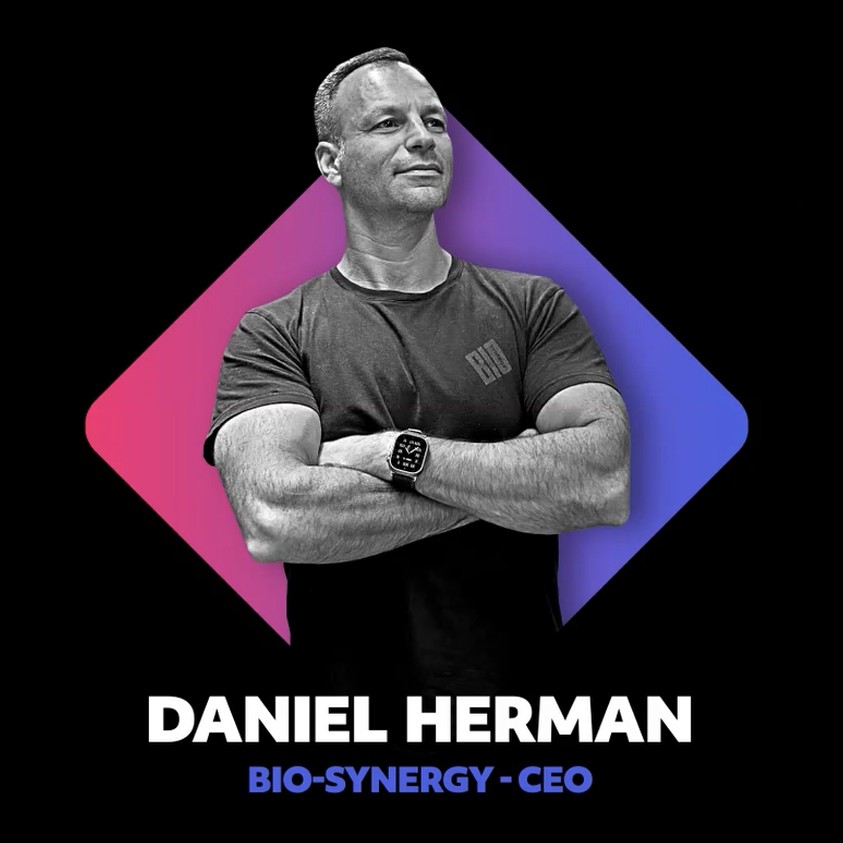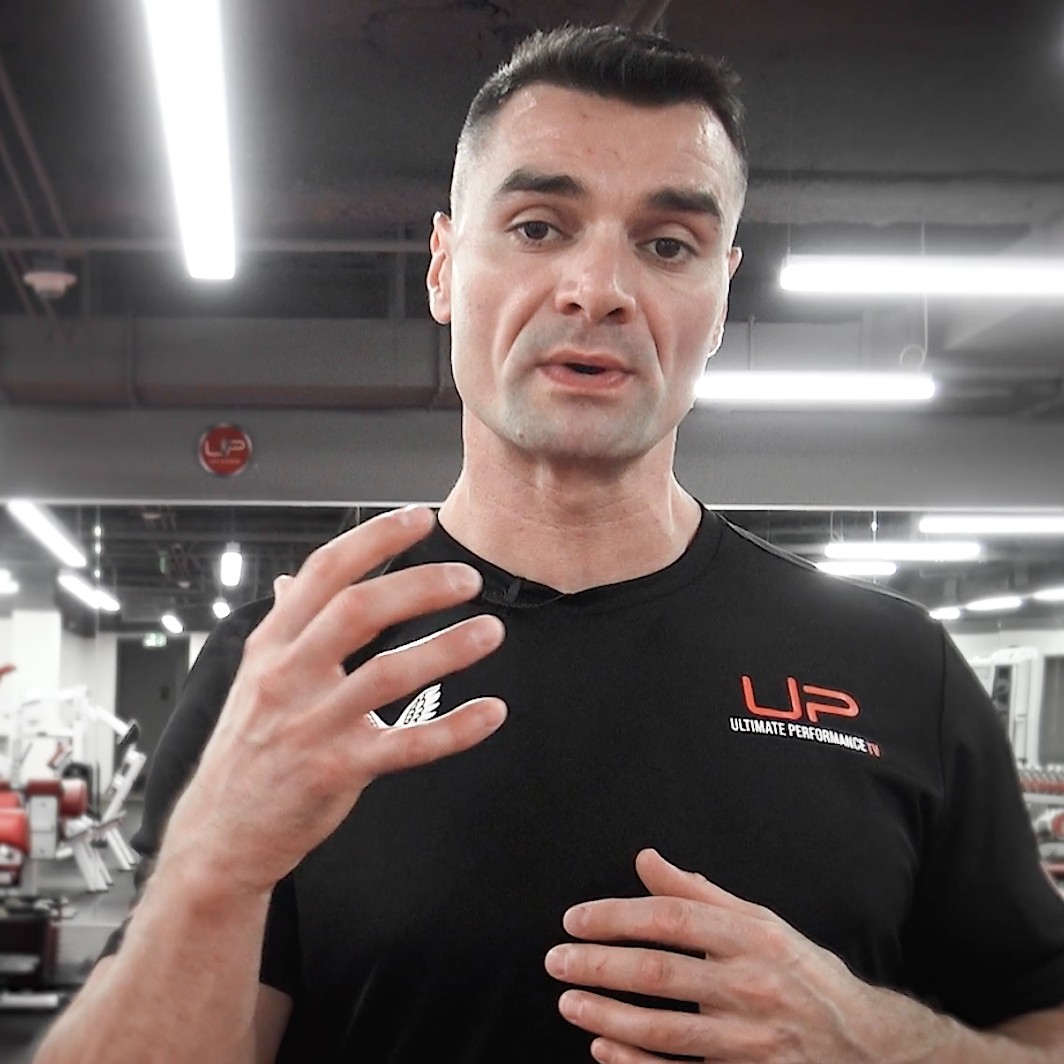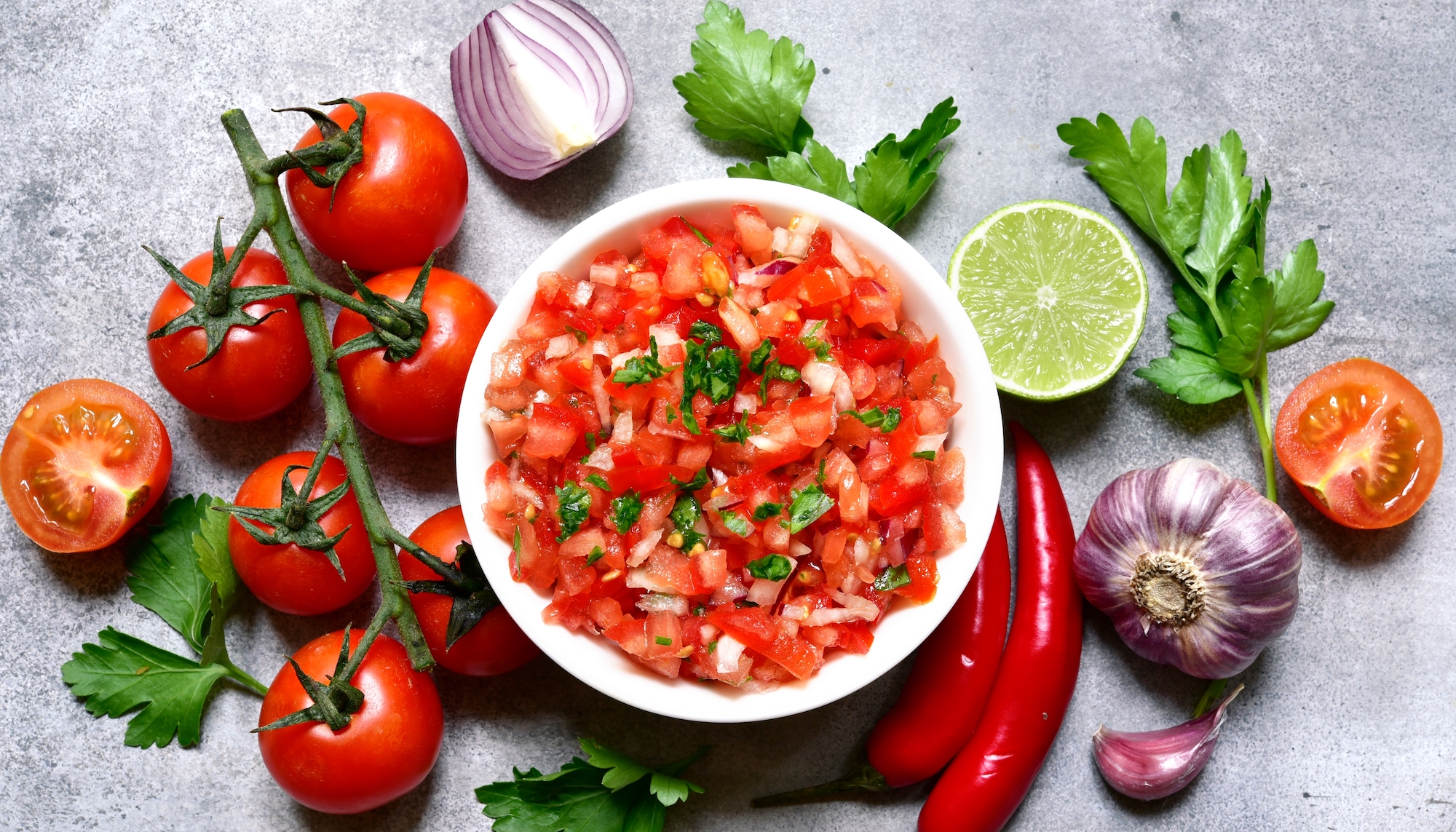Can you lose fat and build muscle at the same time? Experts weigh in
Here's the scoop on body recomposition and how to build lean muscle mass and lose fat.

Losing fat and building muscle are like the Holy Grail of fitness combination. But in practice, it’s not that easy to achieve both at the same time.
Each requires specific diet and exercise approaches, so although possible, it takes work, consistency and patience.
Known as body recomposition, changing the shape of your body — losing fat and building muscle — is worth knowing about. As a coach, I know what it takes to build muscle. And while I can offer basic guidance on nutrition from a training standpoint, I’m neither a dietitian nor a nutritionist.
Whenever I’m curious about a topic and want to learn more (or just want to share some tips and tricks with an audience), I tap into the knowledge of experts. In this case, I reached out to a strength and conditioning coach, master trainer and a nutritionist with extensive knowledge of their professions to help me build a complete picture of body recomposition.
Here’s everything you need to know about how to build muscle and lose fat at the same time, regardless of your fitness level. it might be time to grab one of the best protein shakers and read on.
What is body recomposition?
Strength and conditioning coach James McKay says, “Body recomposition is the art of gaining lean muscle while losing fat. It’s possible but requires a tight balance of progressive resistance training, smart nutrition and adequate recovery.”
James McKay is a strength and conditioning coach. He specializes in body transformation through science-backed training and nutrition strategies, helping clients gain strength, burn fat and build sustainable routines that support long-term performance.
Can you lose fat and gain muscle at the same time?

Yes! But it takes time, consistency and patience.
Get instant access to breaking news, the hottest reviews, great deals and helpful tips.
According to McKay, most beginners (and even intermediate lifters) can achieve recomposition by eating “at maintenance calories with a high protein intake (1.6 to 2.2 grams per kilogram of bodyweight) and lifting consistently.” In other words, you consume roughly the same amount of calories as you burn per day.
Sounds simple, doesn't it?
Daniel Herman, NASM nutritionist, SAQ coach and founder of Bio Synergy, told us: “Most people think in terms of either losing fat or gaining muscle. Unlike traditional dieting or bulking phases that focus purely on weight changes, recomposition emphasizes changing your body’s make-up.”
By this, he means lowering body fat percentage while building or preserving lean muscle mass. “You may not see dramatic shifts on the scale, but you’ll notice significant visual changes and improvements in performance,” he adds.

Daniel is a NASM-qualified nutritionist and owns the company Bio Synergy.
It's good news for the exercise newbies! Body recomposition is known to be most achievable when you’re new to resistance training, are returning from time off, or have higher levels of body fat to begin with.
Herman warns that seasoned lifters with “significant” training experience and lower body fat will find the process slower and harder to achieve naturally. “In those cases, focusing on one goal at a time (cutting or bulking) often produces better results,” he adds.
Eddie Baruta, global head of personal training at Ultimate Performance, agrees. “Your mate Dave has been going to the gym for precisely three weeks, and his shoulders are beginning to resemble footballs. What’s going on here? Herein lies the phenomenon of ‘newbie gains’.
Individuals who have limited resistance training experience can build muscle at a faster rate than those who have been training for longer," he explains.
"When you have very little training experience, your muscles are hyperresponsive to the stimulus provided by resistance training. Relatively untrained individuals can gain substantial amounts of muscle while also shedding body fat, therefore achieving recomposition.”

Eddie is the most senior personal trainer at Ultimate Performance, and he is also responsible for managing the performance of all 300 worldwide trainers, writing programmes and educational content. He has overseen the body recomposition of more than 25,000 clients since 2009 and is Hollywood actor Glen Powell's personal trainer.
Body recomposition: benefits
“Body recomposition offers a variety of advantages beyond aesthetics,” says nutritionist and coach Herman, citing benefits like an enhanced and leaner physique. Other advantages include better metabolic health, improved strength and athletic performance, long-term fat control (muscle burns more calories at rest) and injury prevention.
“Stronger muscles stabilize joints and improve body mechanics,” Herman adds.
How to lose fat and build muscle at the same time
We know it's possible, so how do you achieve it? Here are the main areas to focus on.
1. Training

The key to building muscle is progressive overload, meaning you’ll adapt training variables over time as you get fitter and stronger, adding load or volume over the weeks and months.
Whatever method you choose for exercise, your muscles should feel challenged. Just remember to schedule in your rest days.
Whatever method you choose for exercise, your muscles should feel challenged. Just remember to schedule in your rest days.
S&C coach McKay recommends compound movements and training roughly three to five times a week, mixing weightlifting with accessory work. Think of hitting those big and powerful muscle groups with deadlifts, squats, presses, rows and pull-ups to stay time efficient.
For example, an upper-body strength program could comprise a progressive bench press as your “big lift,” with accessory exercises like triceps kickbacks and flyes to target your arms and shoulders.
If you’re a cardio bunny, Herman says to keep it “strategic” and "moderate" to aid recovery and fat loss. Otherwise, you could dampen your muscle-building efforts. Think low impact, like hill walks or padel.
As you get stronger, remember to increase how much you lift and train relatively close to muscular failure.
“Ditch the body part splits,” adds Baruta. “Training each body part only once per week might give you a great pump, but it’s not ideal if growth is your goal. Your total training volume and proximity to subjective failure are the biggest determinants of muscle gain.”
For example, spread chest exercises across multiple days and hit each body part two to three times per week. Some people might even program three or four full-body workouts a week to stay efficient while working every muscle group.
As you get stronger, remember to increase how much you lift and train relatively close to muscular failure. Unless you’re a seasoned lifter, low reps and super heavy sets might not be the best way to train.
“For the majority of people, hypertrophy-style training that uses moderate loads at moderate rep ranges tends to provide enough practice in movements to get strong, while creating the stimulus the body needs to hang onto muscle,” Baruta adds.
How your training splits look varies from person to person and is based on experience.
2. Nutrition
“Some coaches push a bulk-cut cycle, but for many, especially those not competing, a slower recomposition is healthier and more sustainable,” Baruta explains.
If you’re unfamiliar with bulking and cutting, this simply means eating in a surplus while training to add bulk, then moving into a caloric deficit to cut weight. It’s popular for sportspeople and those competing, but for the everyday exerciser, it isn’t necessary.
“The cornerstone of recomposition is dialling in your nutrition,” agrees nutritionist-qualified Herman. For a slight calorie deficit, he recommends a 10-15% deficit below maintenance. Too few calories can hinder muscle growth and won’t fuel your workout or recovery efforts.
He also recommends a daily protein intake of 1.8 to 2.7g/per kg of bodyweight. However, protein consumption is unique and individual to your body and its needs, so take this number with a grain of salt — figuratively speaking, of course. (I discuss how much protein you need to build muscle at length, if you want to learn more and calculate yours.)
Of course, your macronutrients — protein, carbs and fats — support your gym efforts, so consider how you split these to meet your calorie targets. I’ve put together a counting macros beginner's guide here, which breaks it all down.
To keep it simple, Herman recommends a protein-rich meal before and after workouts for optimal muscle repair (read: should you eat before or after workouts?).
As long as you consume protein throughout the day, don't overthink it too much.

“So many people make the mistake of trying to eat like a bodybuilder and end up massively overly eating their calories,” Baruta reveals.
“A calorie deficit is the prerequisite for fat loss. At the other end of the scale, very aggressive diets yield very little when it comes to muscle growth…there’s a balance.” Plus, going too hard for too long actually impairs performance.
“A moderate deficit strikes a balance between good progress and effective recovery,” Baruta adds.
“More lean body mass means you burn more calories at rest. You can then maintain your new physique by eating higher calories, meaning better performance and increased gains.”
Keep it simple by enjoying whole, high-quality, high-fiber foods to satisfy hunger, regulate metabolism and boost recovery. Think the basics: lean proteins for muscle recovery and growth, healthy fats and complex carbs for energy and leafy greens and veggies to support optimal health. And of course, throw in food that doesn’t hit your macros from time to time!
“You don’t have to chug down a protein shake immediately post-workout for fear of losing your gains. But your protein intake has a major impact on how much muscle you retain,” Baruta adds.
Adding a little protein to each meal is a simple way to increase your intake.
3. Overall movement

Think of body recomposition as a holistic effort, giving your body the correct tools for the job. That includes managing lifestyle factors like sleep, stress and overall daily activity — how much you move your body when you’re not exercising (read: NEAT).
Baruta uses a simple but powerful recipe for fat loss: decreased food intake with increased activity. “Increasing how much you move day-to-day will speed up progress without wrecking your gym performance.” In other words, find simple ways to move more often. Walking up the stairs, standing while you work, or gardening all count.
“Poor sleep can have a seriously negative impact on your body recomposition efforts,” says Baruta. “Sleep loss can increase cravings for sugary foods and reduce your motivation to train. Improving your sleep hygiene will provide an instant, cost-free improvement on your gym gains.”
Winding down before bedtime, limiting high-intensity exercise late at night and instilling habits like meditation or breathwork can all help.
“Prioritize sleep,” trainer McKay agrees. Seven to nine hours is a guideline, but this differs from person to person depending on lifestyle.
If you've got this far and feel instantly overwhelmed, focus on training, nutrition, or both first. One thing at a time! Once you've got those basics down, slowly incorporate other factors like how often you move or sleep, or how your recovery looks.
If you take just two things away from this, let it be more protein and resistance-based exercise several times a week.
Is it better to focus on one goal at a time?

For some, focusing on one goal at a time — fat loss or muscle growth — can achieve faster results, or at least feel less overwhelming and more achievable.
If that sounds like you (me too), here are some pointers from Herman. But remember, every journey is different and should be tailored to your needs and lifestyle — these are just some helpful guidelines.
Fat loss (cutting phase)
- Calorie deficit: roughly 20–25% below maintenance.
- Strength training: Continue lifting to preserve muscle.
- Cardio: Flexible
- Duration: Typically 6–12 weeks.
Muscle gain (bulk phase)
- Calorie surplus: roughly 5–15% above maintenance.
- Progressive strength training: Focus on adding weight or volume.
- Cardio: Enough to maintain cardiovascular health, such as walking or swimming
- Duration: 4–6 months or longer for noticeable muscle gains.
“If you're new to training or returning from a break, start with recomposition,” he adds. “If you're already lean and looking to optimize your physique further, it’s usually better to cycle between cutting and bulking.”
How long does body recomposition take?
How long it takes depends on factors like training experience, genetics, your current body fat percentage and lifestyle. It’s impossible to stick a number on it and apply the same to everyone.
“But we know that the sweet spot for most people is losing between 0.5%-1.5% of their total bodyweight per week. This strikes the right balance between effective progress while minimizing the risk of muscle loss during the diet,” estimates Baruta.
“Most people will lose somewhere in the region of 10-12% of their total bodyweight over a 12-week period if they achieve their weekly targets. However, this varies depending on your starting weight, body composition and how much time you have available to exercise.”
He also warns it’s a moving target, so you’ll need to adjust things over time. As the saying goes, “There’s no one-size-fits-all approach.” Taking some measurements and tracking over the weeks and months will help you identify how you’re doing against your goals.
Working with a personal trainer, although not accessible for everyone, could help you get the basics in place at the start of your journey.

Bottom line
There’s a lot to digest, so let’s just strip it back to basics for one moment. Body recomposition is realistic with consistency and some structure. Remember to revisit the journey as your body, experience and metrics change.
How you program your nutrition and workouts will naturally move on as you get stronger, build more muscle and your body composition evolves, so try not to be stagnant and allow for flexible programming.
It comes down to proper rest, balanced nutrition and resistance training. Think high protein, a slight calorie deficit (for fat loss) and consistent progressive overload when training all muscle groups, making sessions harder while programming several workouts a week.
Unfortunately, the wealth of conflicting information online can lead to ‘paralysis by analysis.'
Eddie Baruta
“Unfortunately, the wealth of conflicting information online can lead to ‘paralysis by analysis,'” Baruta warns.
“There is no silver bullet...Muscle gain and fat loss occur at very different rates. To gain muscle at exactly the same rate as fat loss, let’s just say, you’d be verging on Arnie-level genetic potential.
Don’t be fooled, the scale needs to start moving to start chiselling away and see that hard-earned muscle. Tracking your weight, steps, food intake and training provides critical data that indicates if you are progressing or if you need to make a change.”
More from Tom's Guide
- High reps vs heavy weights: which is better for building muscle?
- Hypertrophy vs strength training: Which is better for building muscle?
- I’ve been teaching weightlifting for years — 3 ways to build strength and muscle using light weights

Sam Hopes is a level 3 qualified trainer, a level 2 Reiki practitioner and fitness editor at Tom's Guide. She is also currently undertaking her Yoga For Athletes training course.
Sam has written for various fitness brands and websites over the years and has experience across brands at Future, such as Live Science, Fit&Well, Coach, and T3.
Having coached at fitness studios like F45 and Virgin Active and personal trained, Sam now primarily teaches outdoor bootcamps, bodyweight, calisthenics and kettlebells.
She also coaches mobility and flexibility classes several times a week and believes that true strength comes from a holistic approach to training your body.
Sam has completed two mixed doubles Hyrox competitions in London and the Netherlands and finished her first doubles attempt in 1:11.
You must confirm your public display name before commenting
Please logout and then login again, you will then be prompted to enter your display name.










